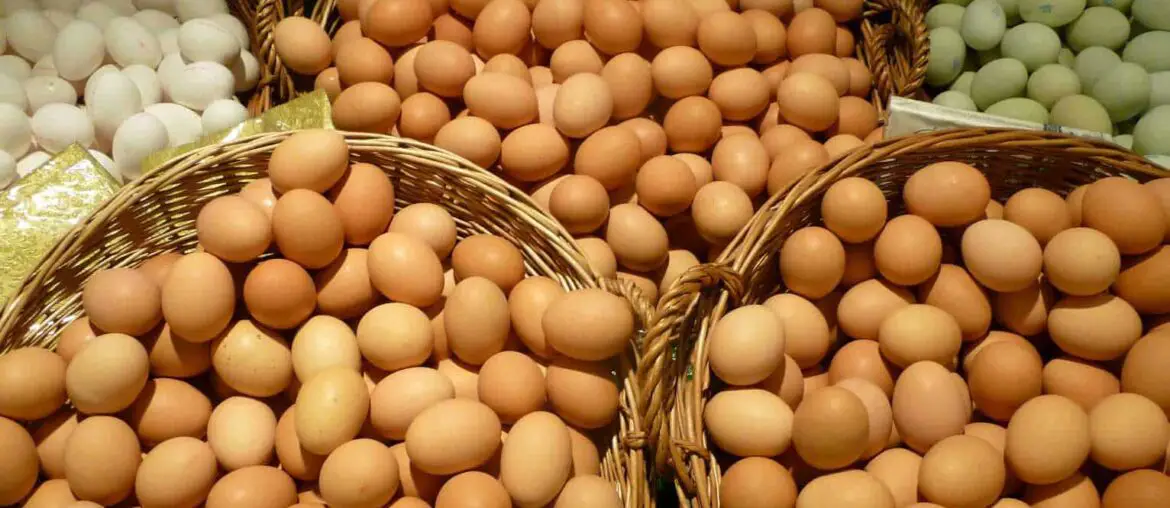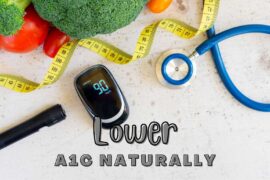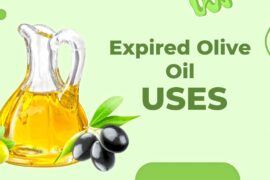Eggs, also known as chicken eggs and chicken seeds, are the eggs of hens. It has a hard shell on the outside and an air chamber, egg white, and yolk on the inside. Rich in cholesterol and nutrition. An egg weighs about 50g, contains 7-8g protein and 5-6G fat.
The proportion of amino acids in egg protein is very suitable for human physiological needs and easy to absorb into the body. The utilization rate is as high as 98%, and the nutritional value is very high. Considering the internal structure of an egg, it is a nutritious food rich in protein.
The internal structure of an egg
Eggshell
The whole eggshell is oval, one side is big, and the other is small, accounting for 11% ~ 11.5% of the entire egg volume. The internal structure can divide into the upper shell membrane, lower shell skin, and air chamber.
The main component of the eggshell is calcium carbonate. That accounts for 91% ~ 95% of the whole eggshell quality. Its calcium content is the same as pearl, oyster, beef bone, and dried fish, and it is a good source of calcium. Also, the eggshell contains about 5% magnesium carbonate, 2% calcium phosphate, and colloid.
- The membrane on the shell:
That is an opaque and unstructured membrane outside the eggshell. Its function is to prevent the water evaporation of the egg. - Subcutaneous shell:
That is the film inside the eggshell. There are two layers in total. Air can freely pass through the film. - Air chamber:
That is the space between the lower skin of the second shell. If the gas in the egg is lost, the air chamber will increase continuously.
After the eggshell is soaked in vinegar or some acid solution for a period of time, the eggshell will disappear and become a shell-free egg with only one layer of film left.
The function of the eggshell is mainly exhibiting in several aspects
- The gas exchange between the embryo and the outside during the incubation process, as well as the
- Transmission of light, heat, sound, etc.
- The prevention of excessive evaporation of water in the egg.
- The bearing of the weight of the parent bird during the incubation.
- The prevention of mechanical damage and the entry of microorganisms.
- The provision of calcium for the development of the embryo.
- The increase of stability and aggregation of the egg in the nest due to the shape of the eggshell In a small space is conducive to hatching.
- The surface of the egg has a better disguise.
Shell membrane
Shell membrane is a kind of fibrous membrane wrapped in protein. That is an organic fiber network composed of tough keratin. There are two layers in the shell membrane. First, the shell membrane is thick, clinging to the eggshell, an opaque and unstructured membrane.
And its function is to avoid the evaporation of moisture in the egg content. The inner shell membrane is about 1 / 3 of the thickness of the former. It attaches to the inner layer of the shell membrane, through which air can freely pass.
Most of the inner and outer shell membranes are closely connected, and only at the blunt end of the egg are separated to form the air sac. Thus, the air chamber formed after the egg was produced.
The contraction is caused by the temperature difference between the inside and outside of the body and the formation of a gap between the shell and the membrane. If the water in the egg is lost, the air chamber will continue to increase. When hatching the fertilized egg, it will increase with the development of the embryo.
Protein
Protein is a kind of semi-flowing gelatinous substance under the shell. That accounts for 57% – 58.5% of the total egg volume. The protein contained about 12% protein, mainly ovalbumin. Protein also contains a certain amount of riboflavin, niacin, biotin, calcium, phosphorus, iron, and other substances.
The protein can divide into concentrated protein and diluted protein.
- Concentrated protein: part of the protein near the yolk, with high concentration.
- Diluted protein: part of the protein near the eggshell, with a relatively thin concentration.
Yolk
The yolk is mainly located in the center of the protein. The volume of the yolk is about 30% ~ 32% of the whole egg. The main component is vitellin. Also, the fat content is 28.2%. Most of the fat belongs to one of the phospholipids. Egg yolk is rich in vitamin A and D and contains high iron, phosphorus, sulfur, calcium, and other minerals. Also, the yolk has an embryo disk.
Germinal disc
A white spot on the yolk’s surface, the unfertilized, is called the blastoderm, and the fertilized is called the ovule. The fertilized egg further develops into the early blastoderm. The diameter of the disc of the fertilized egg is about 3 mm. The ovule of the unfertilized egg is smaller, which will develop into the chicken heart.
Yolk lacing
The yolk is generally stratified, consisting of yellow yolk and white yolk arranged in concentric circles. A yolk center in the middle connects with the embryo disc by the yolk heart neck. Along the long axis of the egg, the two ends of the yolk are composed of thick protein to form yolk frenum. That keeps the egg in the protein center, plays a buffering role, prevents the egg from concussion, and is conducive to egg hatching.
Cuticle
Cuticle refers to the layer on the surface of the eggshell. It is similar to the cuticle of the skin.
Yolk membrane
The yolk membrane is a part of the fertilized egg of a bird. That clings to the surface of the egg. It belongs to the primary egg membrane, which is developed from the cell membrane of the fertilized egg and has a protective function. It formed in the ovaries. Generally, it is composed of the secretion of follicular cells, and the egg itself may also participate in the formation of the yolk membrane.
Nutrient contents of an egg
According to the analysis, 1 egg (100g) contains 12.58 grams of protein. Mainly included eight amino acids necessary for the human body in the egg white protein and egg globulin. So that is very similar to the composition of human body protein.
The absorption rate of the human body to egg protein can be as high as 98%. Every 100 grams of eggs contain 11-15 grams of fat, mainly stored in the yolk. The human body is easily digesting and absorbing it. The yolk is rich in lecithin, sterols, yolks, calcium, phosphorus, iron, vitamin A, vitamin D, and B vitamins. These ingredients are beneficial for improving the function of the nervous system. Therefore, the egg is a portion of good brain food.
| Contained nutrients | Content (per 100 Grams) | Unit |
|---|---|---|
| Calories | 147 | Kcal |
| Carbohydrate | 0.77 | g |
| Fat | 9.94 | g |
| Protein | 12.58 | g |
| Cellulose | 0 | g |
An egg owns nutrients that the human body needs every day. Those are follows
- Phosphorus 8%
- Zinc 4%
- Iron 4%
- Protein 12.6%
- Vitamin D 6%
- Vitamin E 3%
- Vitamin A 6%
- Vitamin B 2%
- Vitamin B2 5%
- Vitamin B6 4%
These nutrients are essential to the human body, and they play a significant role. The main is repairing human tissues, forming new tissues, consuming energy, and participating in complex metabolic processes.
Protein
The egg contains rich, high-quality protein. For example, 1 egg (100g) contains 13g of protein. The protein in two eggs is roughly equivalent to the protein in 50g of fish or lean meat. Egg protein digestibility is also the highest in milk, pork, beef, and rice.
Fat
1 egg (100g) egg contains 11.1g fat. It mostly concentrates on the yolk, with unsaturated fatty acids as the majority. The fat is in the form of milk melting, which is easy to absorb into the human body.
| Consumption | Kcal |
|---|---|
| 1 piece | 8 |
| 1 oz | 44 |
| 1 small | 57 |
| 1 medium | 68 |
| 1 serving (50g) | 77 |
| 1 large | 77 |
| 1 extra large | 69 |
| 100g | 154 |
| 1 cup | 209 |
Cholesterol
Egg yolk contains more cholesterol, which can be up to 510 mg / 100g. Therefore, many people, especially the elderly, are wary of eating eggs. They are afraid that eating eggs will increase cholesterol and lead to atherosclerosis.
Scientists have found that eggs contain more cholesterol but are also rich in lecithin. When lecithin enters the blood, it will make cholesterol and fat particles smaller and keep them in suspension, thus preventing cholesterol and fat deposition in the blood vessel wall.
The cholesterol in 100 ml blood will increase by up to 2 mg. That will not cause vascular sclerosis. But also should not overeat. It is not too good. It’ll be conducive to gastrointestinal digestion, resulting in waste and increased liver and kidney burden.
Amino acid
The egg is rich in methionine. Cereals and legumes are lack of this essential amino acid.
Other micronutrients
There are other essential micronutrients in eggs, such as potassium, sodium, and magnesium. Especially the iron in the yolk is up to 7 mg / 100g. But the iron in the yolk is non-heme iron. That is combined with lecithin, and the utilization rate is only 3%. The phosphorus in the egg is very rich, but the calcium is relatively insufficient. So it is nutritious to eat milk and eggs together. Eggs are also rich in vitamins A and B.


![Interesting Facts About Kiwi Fruit [Bet You Don’t Know Many] Interesting facts about kiwi fruit](https://www.stethostalk.com/wp-content/uploads/2022/11/Interesting-facts-about-kiwi-fruit-270x180.webp)




